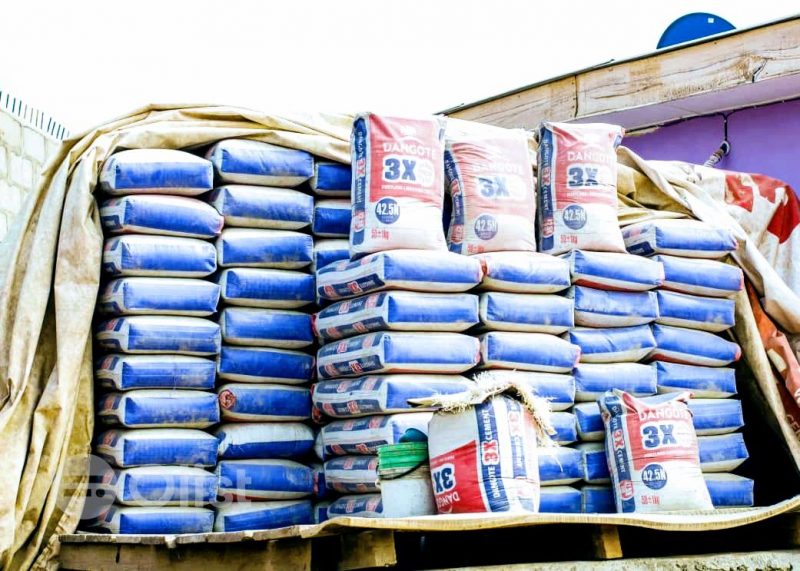Cement Prices In Nigeria 2025: Latest Updates
What drives the cost of building in Nigeria? Cement prices, a cornerstone of construction, fluctuate significantly across the nation, impacting project budgets and timelines. This intricate pricing landscape demands careful navigation, understanding the factors at play and their implications for the Nigerian construction sector.
Navigating the Nigerian cement market requires a keen understanding of the diverse factors influencing price. From fluctuating production costs and transportation logistics to the interplay of supply and demand, and even government policies, the cost of a 50kg bag of cement can vary dramatically. As of April 2025, prices ranged from 9,000 to 11,000, reflecting this dynamic market. Key players like Dangote Cement, BUA Cement, and Lafarge Africa hold significant sway, their pricing strategies impacting the entire industry. Regional variations further complicate the picture, with prices often inflated in urban centers like Lagos and Abuja due to increased demand and logistical challenges. Even the type of cement plays a role, with specialized varieties like white cement, also known as POP cement, commanding a premium due to their unique properties and limited applications. For example, a 25kg bag of white cement often surpasses the cost of a standard 50kg bag of grey cement.
| Attribute | Details |
|---|---|
| Average Price (50kg bag, Grey Cement, April 2025) | 9,000 - 11,000 |
| Average Price (50kg bag, Grey Cement, Feb 2025) | 9,000 |
| Average Price (50kg bag, Grey Cement, October 2024) | 6,500 - 8,250 |
| Average Price (50kg bag, Grey Cement, March 2024) | 10,000 - 14,000 |
| Wholesale Price (600 bags, April 2025) | 6,000,000 per trailer load |
| Dangote Cement Price (per truckload, February) | 4,800,000 (600 bags), 7,200,000 (900 bags) |
| Major Manufacturers | Dangote Cement, BUA Cement, Lafarge Africa, Ibeto Cement, UNICEM |
| Price Influencing Factors | Brand, Quality, Location, Supply & Demand, Production Costs, Transportation, Government Policies |
| Price Variation | Significant price differences exist between brands and locations across Nigeria. Urban areas like Lagos and Abuja typically have higher prices. |
| White Cement (POP Cement) | Considerably more expensive than grey cement. A 25kg bag often costs more than a 50kg bag of grey cement. |
| Reference | Dangote Cement |
The cement market in Nigeria presents a complex interplay of competing forces. In 2024, BUA Cement attempted to lower prices to 3,500 per 50kg bag, but this move was ultimately unsustainable due to dealer interference and market dynamics. This incident underscores the challenges manufacturers face in controlling retail prices. Meanwhile, the Cement Producers Association of Nigeria (CPAN) has warned that government initiatives, such as the push for concrete roads, could drive prices even higher. Consumers and builders alike must remain vigilant, tracking these trends and understanding their implications for project planning and budgeting. The year 2023 saw CPAN caution that the Federal governments plan for concrete roads could see cement prices rise to 9,000 per bag, a prediction that seems prescient in light of current market conditions.
The disparity in cement prices across Nigeria isnt merely a matter of brand loyalty or product quality. Logistics play a significant role, impacting transportation costs and influencing regional pricing. The vast distances between production facilities and various markets within Nigeria contribute to these logistical complexities. This highlights the need for efficient supply chain management and infrastructure development to mitigate price fluctuations and ensure equitable access to this essential construction material. The availability and affordability of cement directly impacts the progress of infrastructure projects and the overall growth of the Nigerian construction industry.
Furthermore, the price of cement can significantly influence the choice of building materials. The higher cost of white cement often restricts its use to specialized applications, such as decorative finishes and architectural details. The cost-benefit analysis of using white cement versus grey cement requires careful consideration, weighing aesthetic preferences against economic feasibility. In some cases, achieving the same structural strength with white cement can require significantly more material than using grey cement, further increasing costs. Therefore, understanding the specific requirements of a project and the relative costs of different cement types is essential for informed decision-making in construction.
In conclusion, understanding the dynamics of cement pricing in Nigeria is paramount for anyone involved in the construction sector. From fluctuating market conditions and government policies to logistical complexities and the interplay of competing brands, a multitude of factors shape the final cost of a bag of cement. Staying informed about these variables allows for proactive planning, efficient budgeting, and informed material choices, ultimately contributing to the success and sustainability of construction projects across Nigeria.


